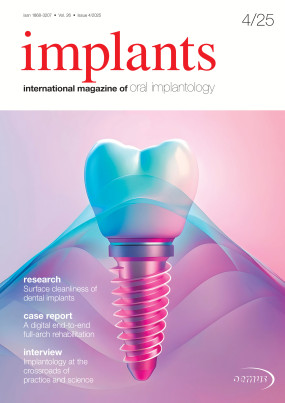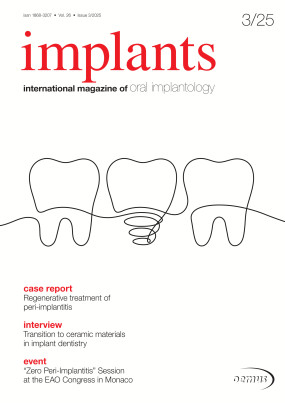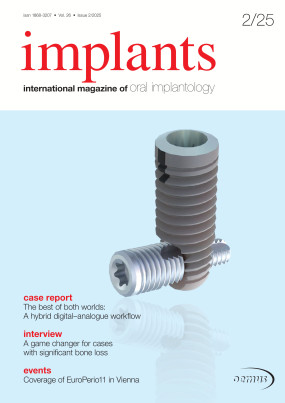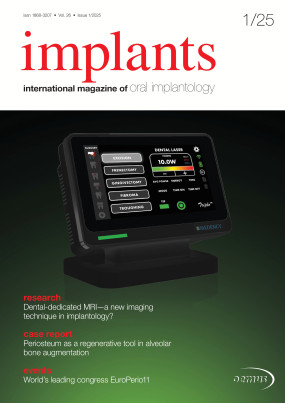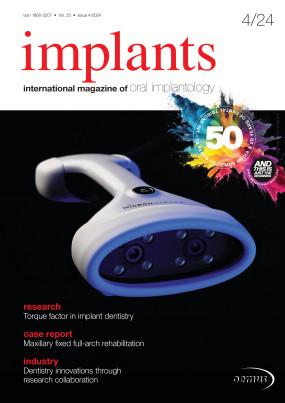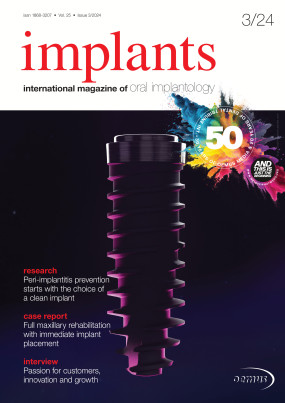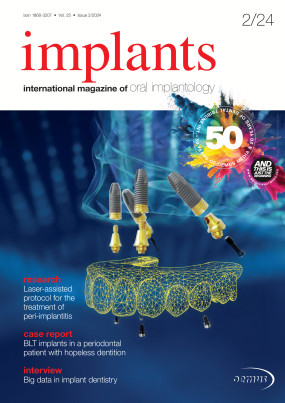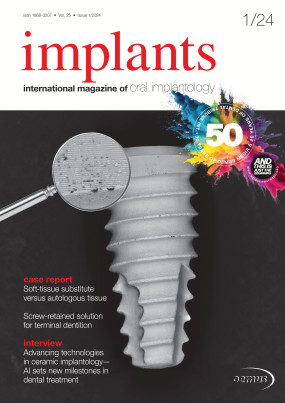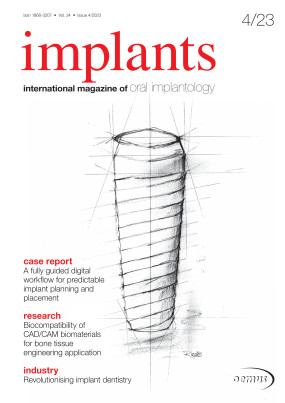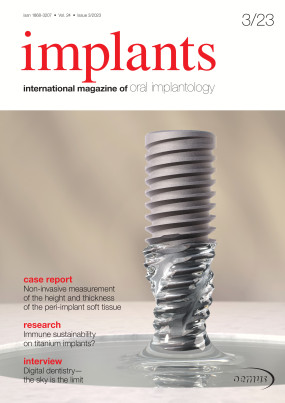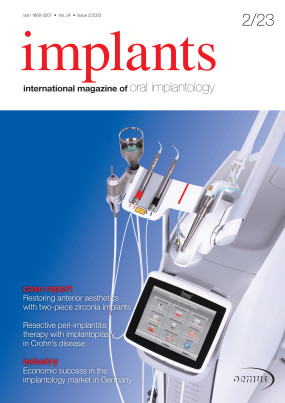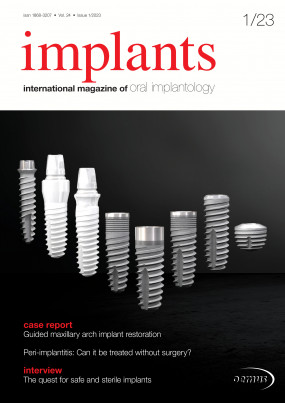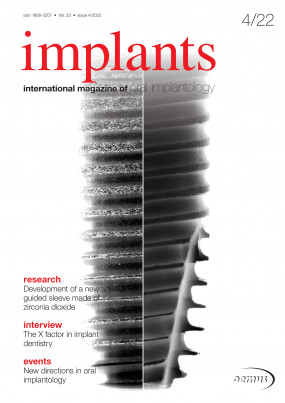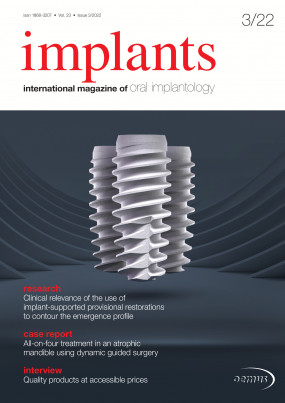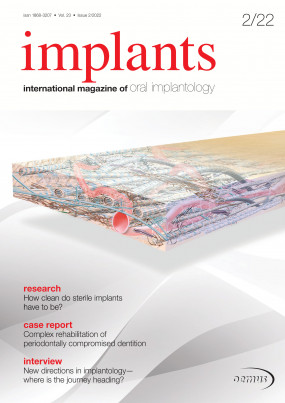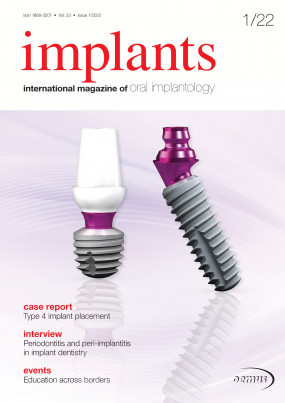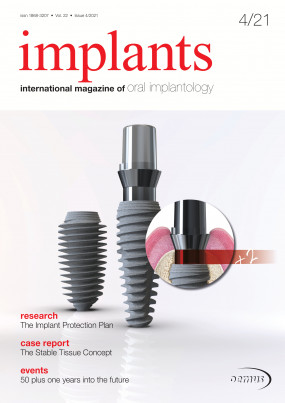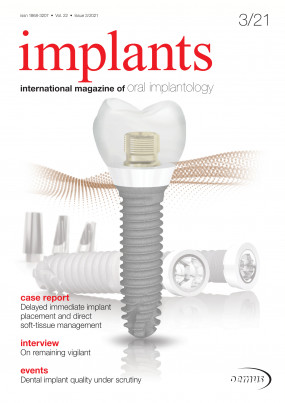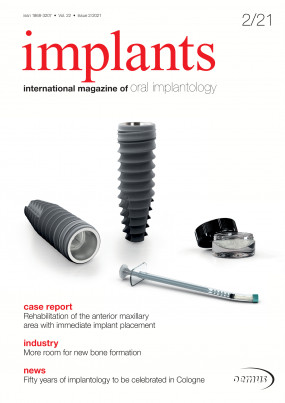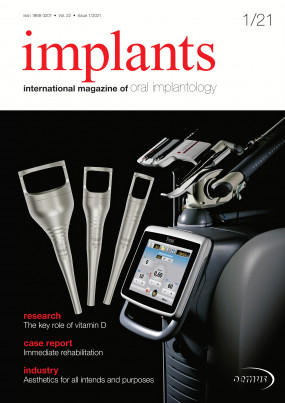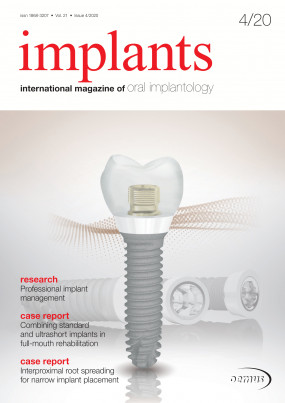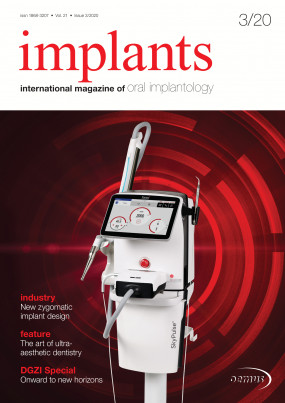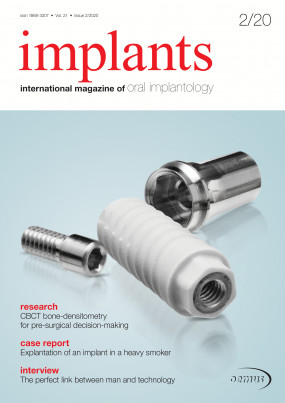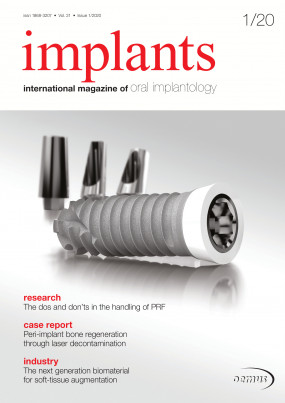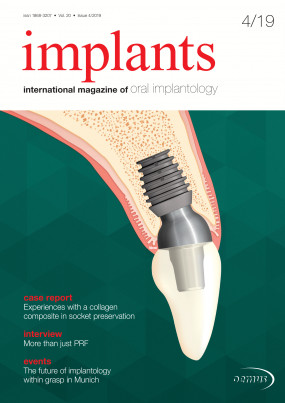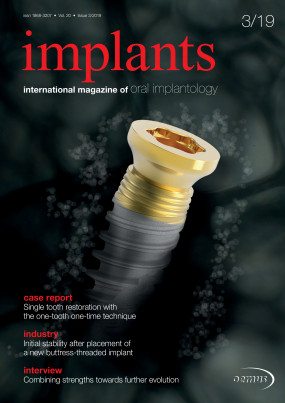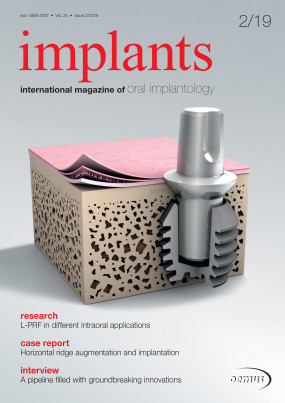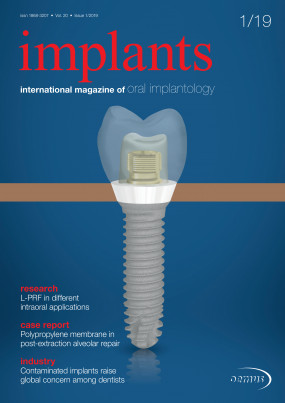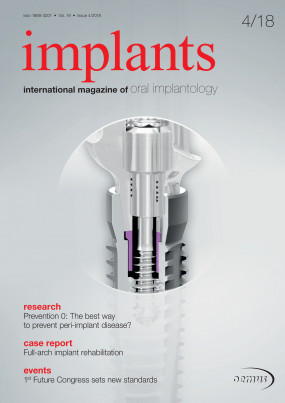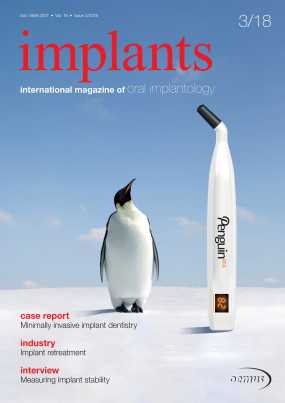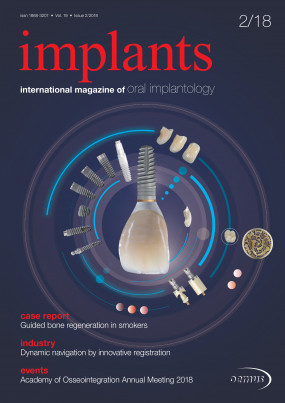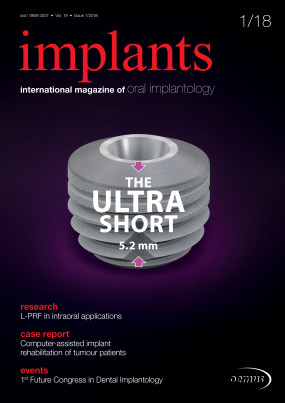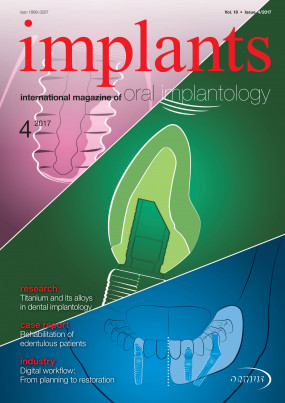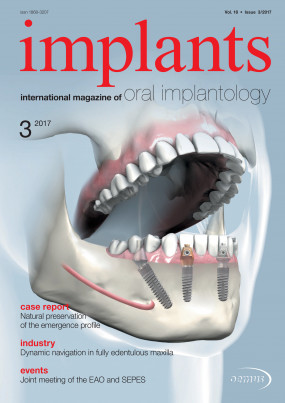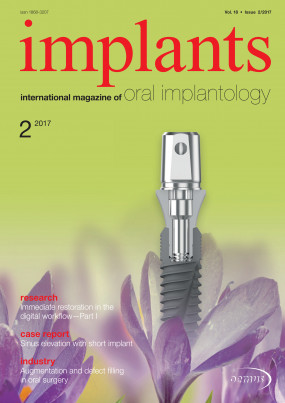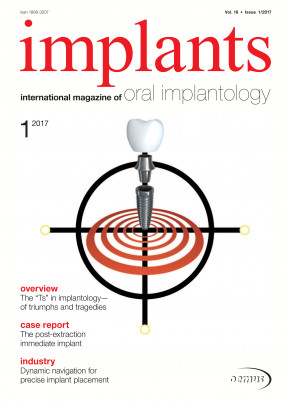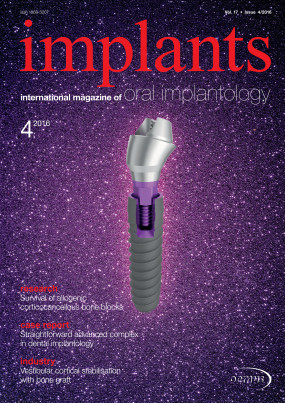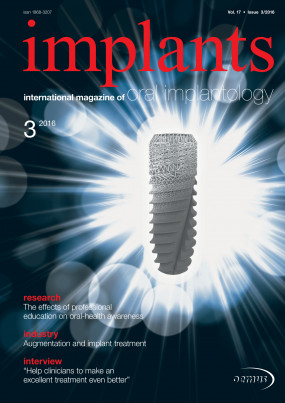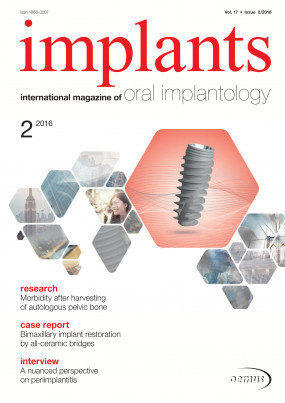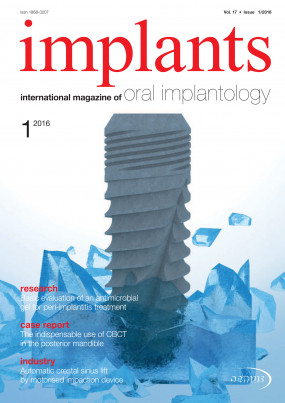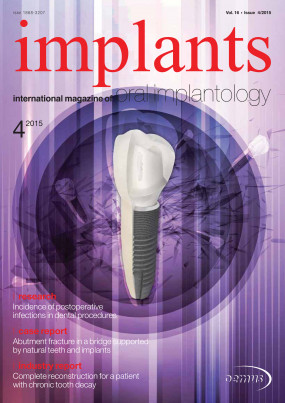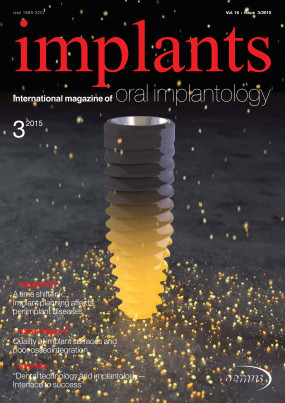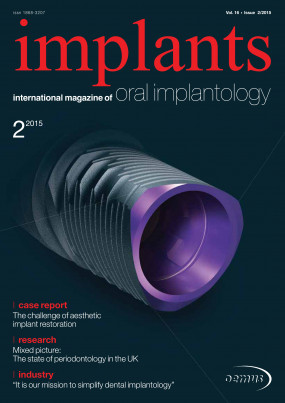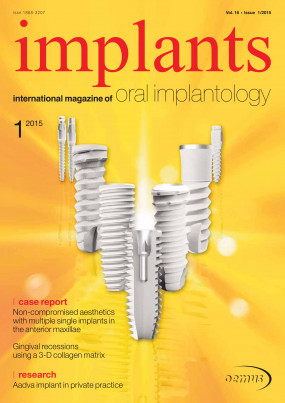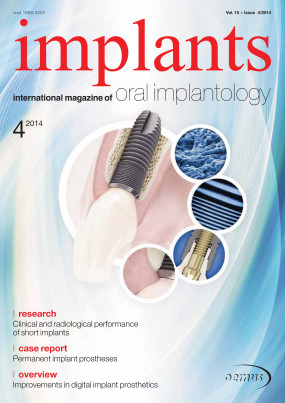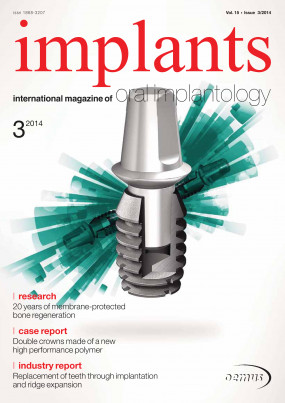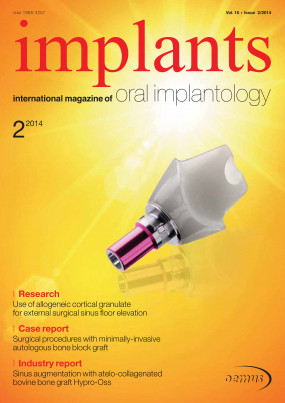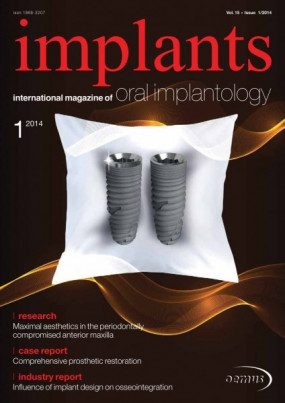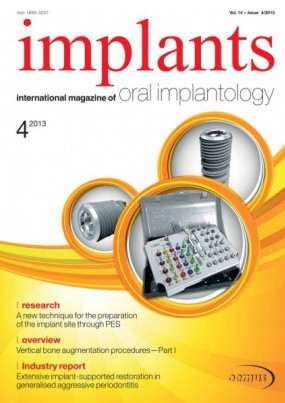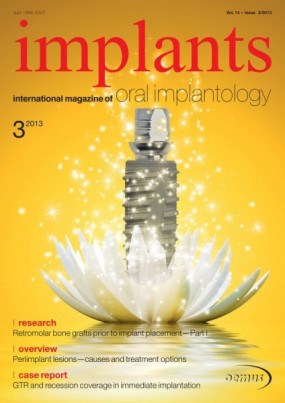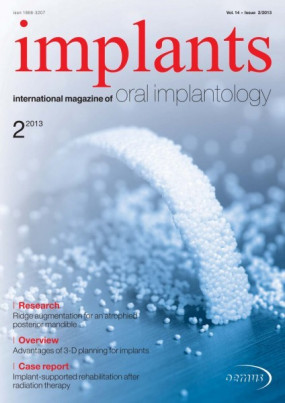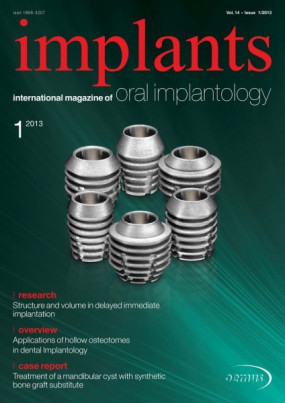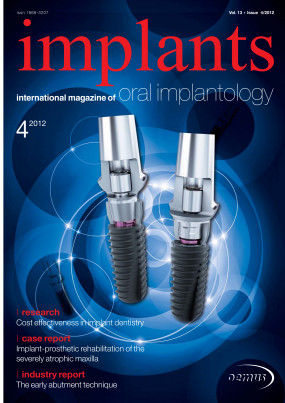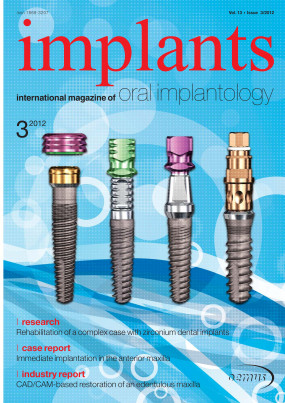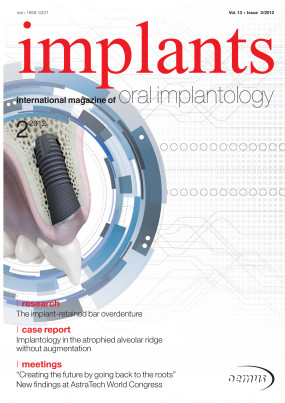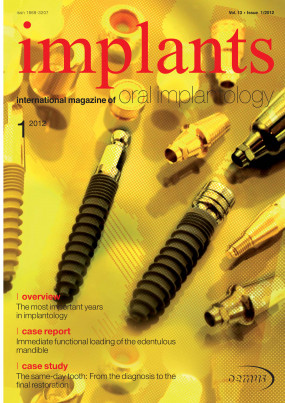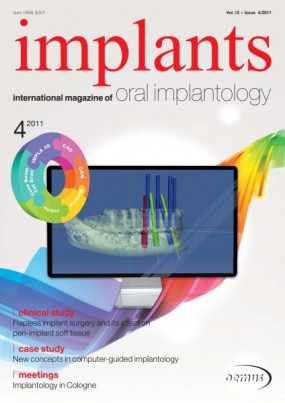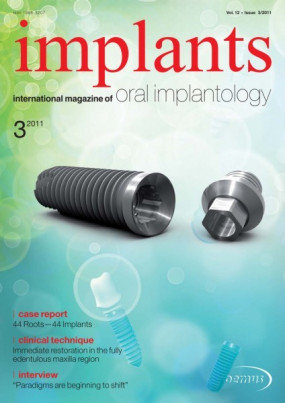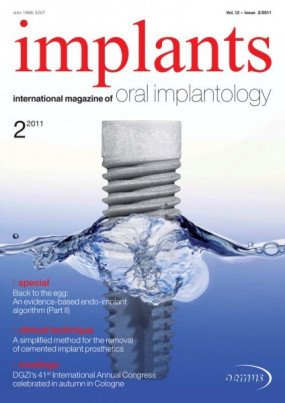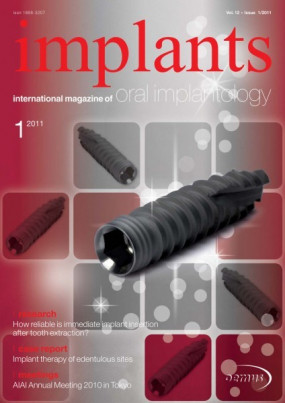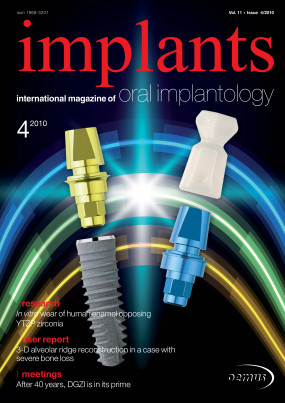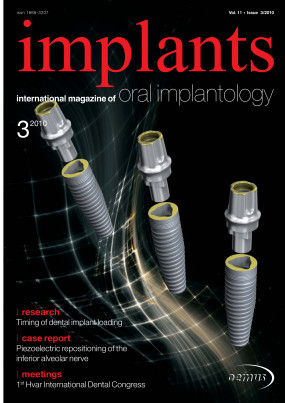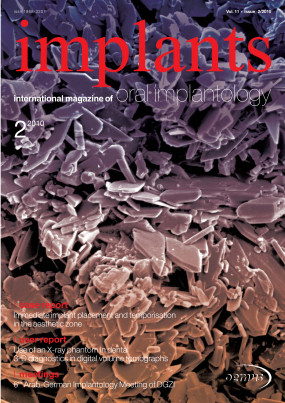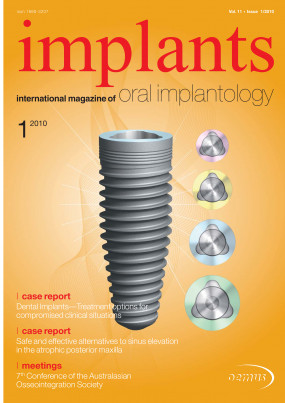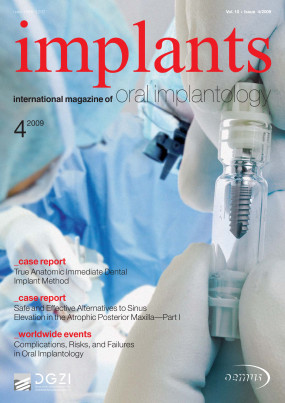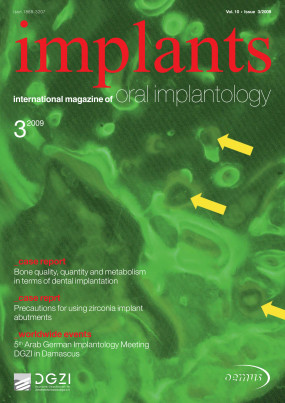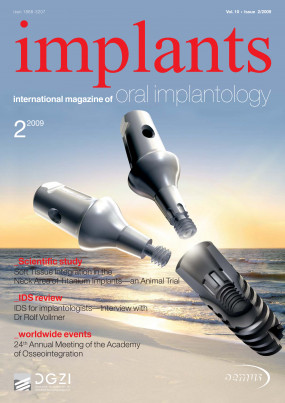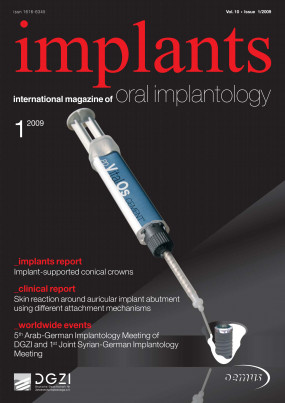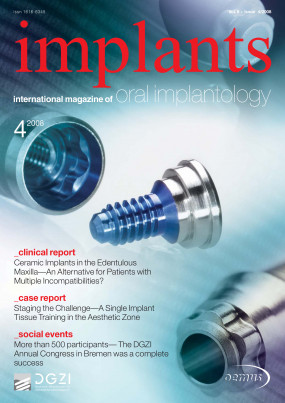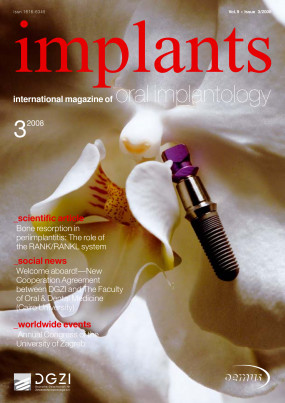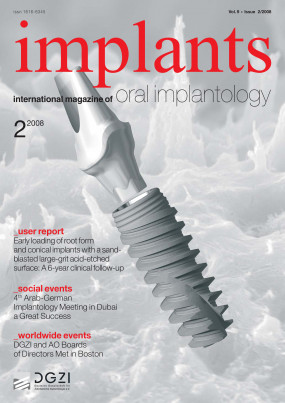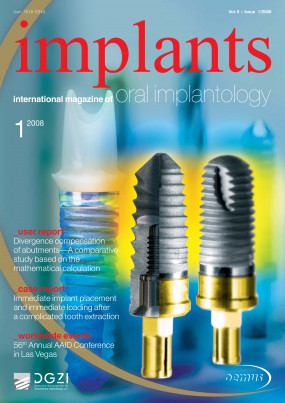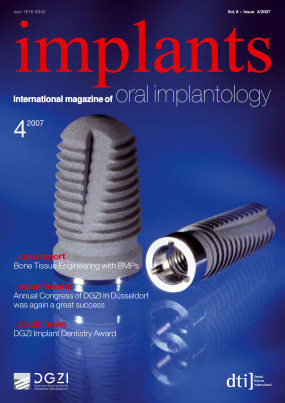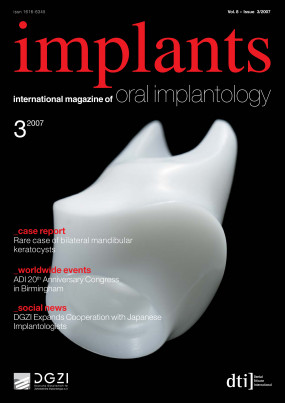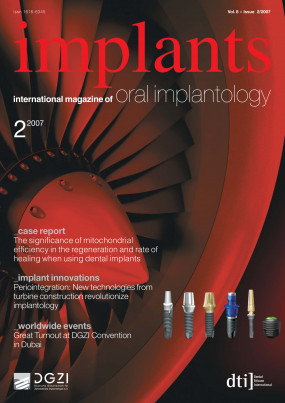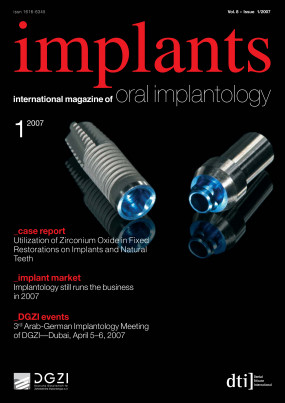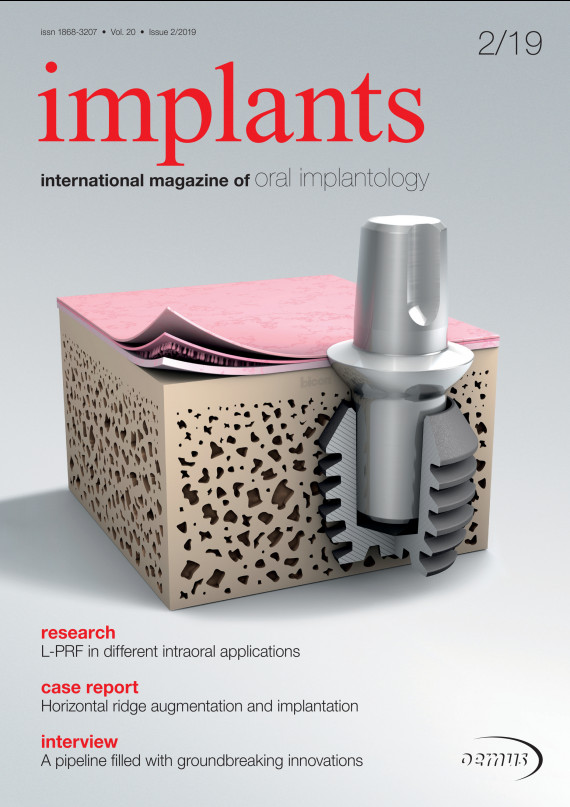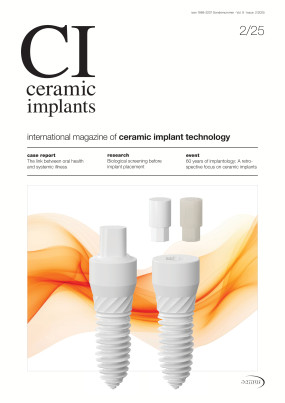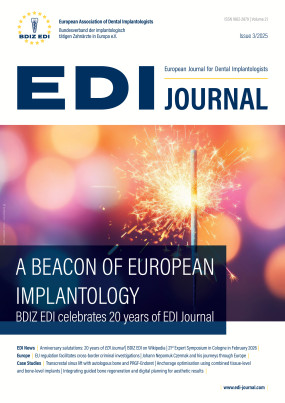Inhaltsverzeichnis
1
3
4
6
L-PRF in different intraoral applications – Part IV: Three preparation protocols
Prof. Nelson R. Pinto1, Dr Andy Temmerman2, Ana B. Castro2, Simone Cortellini2, Prof. Dr Wim Teughels2 & Prof. Dr Marc Quirynen21 Department of Periodontology and Oral Implantology, Faculty of Dentistry, Universidad de Los Andes, Santiago, Chile2 Departme
Favourable wound healing has always been a major quest in dental surgery. It is a concern in both healthy and compromised patients. In an effort to improve and accel-erate healing of both hard- and soft-tissue, substitutes, including growth factors and biomaterials, have tradition-ally been employed. Membranes were also introduced to separate tissue. Recent research clearly indicates that leukocyte- and platelet-rich fibrin (L-PRF; a second gen-eration of platelet concentrates) significantly enhances wound healing in both soft- and hard-tissue. Evidence now supports the assertion that this has the potential to replace the above-mentioned substitutes in many situations...
12
Precision in implant placement is of utmost importance for achieving predictable aesthetics and successful restorations, especially in the anterior zone. The quest for accuracy has recently been aided by digital workflows and stereolithographic stents, which not only support planning the implant positioning by flapless procedures accurately but also make possible the prefabrication of a provisional restoration before the procedure. CAD/CAM technology helps reduces inadvertent time loss and manual errors of impres-sion making, pouring casts and fabrication of prostheses...
18
22
Atrophy of the mandibular bone caused by premature tooth loss due to periodontal or endodontic problems can often be found in posterior areas. Problems associated with implantation in these cases often arise owing to limited bone height or width of the mandible, and several treatment options have been suggested to gain enough bone for a stable implantation and achieve an aesthetically good result.1 ...
28
At the 2019 International Dental Show (IDS), Georg Isbaner, editorial manager of implants, spoke with Nobel Biocare President Hans Geiselhöringer about the novel concept of “Mucointegration”, about the role that the ceramic implant system NobelPearl plays in the portfolio of the company and about what participants can expect from their Global Symposium in Madrid this summer. In addition, he shared a few details about the new implant system N1, which is going to be introduced soon...
32
In 2018, Dr Luigi Canullo was awarded the William R. Laney Award for the second time. The prestigious prize is awarded annually by the Academy of Osseointegra-tion and is considered to be its highest scientific recognition. Dr Canullo received the award for his latest research study, titled “Association between clinical and microbiologic cluster profiles and peri-implantitis”. In this study, he investigates the association between clinical and micro-biological profiles and peri-implantitis in order to catego-rise the condition into different groups...
34
When the Bicon system was first introduced in 1985, its freestanding 8 mm length implants were considered quite short. Since then, the natural progression of Bicon’s design philosophy has resulted in 5mm SHORT implants, all with proven clinical success. Impressively, the design of the Bicon implant system has remained essentially unchanged since it was first conceived in the late 1960s. At the first Giornate Veronesi congress, which celebrated its debut in the Italian village of Valpolicella in April, implants spoke with Dr Vincent J. Morgan, founder and president of the company, about Bicon’s early days, copycats and what makes its SHORT implant so special...
38
44
On Friday, 3 May 2019, the first edition of Giornate Veronesi was held in Verona in Italy. The city of love, where the story of Romeo and Juliet is set, served as a backdrop for the German–Italian congress on implan-tology and general dentistry. With over 200 participants, the two-day congress turned out to be a huge success. Prof. Pier Francesco Nocini, Professor of Maxillofacial Surgery at the University of Verona, opened the congress programme on Friday morning, comprising five lectures given at the University of Verona. In his opening lecture, Prof. Nocini discussed the possibilities of modern oral rehabilitation of the edentulous, atrophied maxilla using Zygoma implants...
